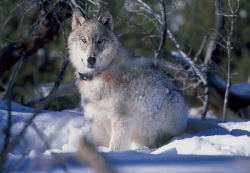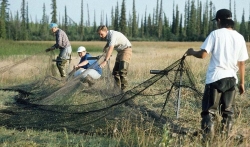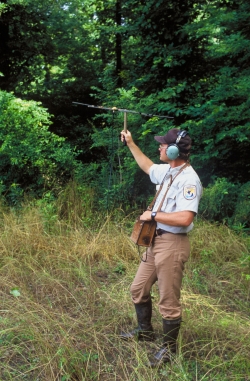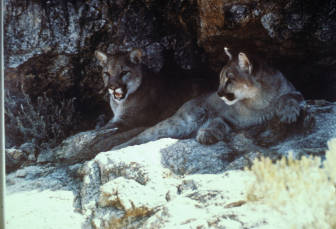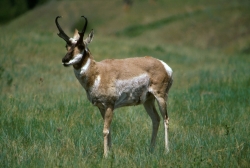
Courtesy US FWS Digital Library
Photographer: James C. Leopold
Hi, I’m Holly Strand from Stokes Nature Center in beautiful Logan Canyon.
The American pronghorn has an identity problem. It’s Latin name Antilocapra Americana means “American antelope goat.” But the fleet-footed animal of the American West is neither an antelope nor a goat. It is the sole survivor of a family of hooved animals that flourished in the Miocene, from 7-25 million years ago. More than 13 species of that family have been found in the fossil record, but only one pronghorn survived to modern times.
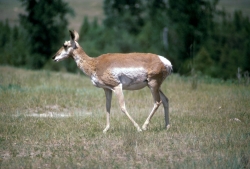
Many consider the pronghorn to be the fastest land animal in the world. Certain individuals have been clocked up to 60 miles an hour. It’s true that cheetah can go 70 miles per hour,–but only for several hundred yards. The pronghorn on the other hand, can go for great distances at high speed without breaking a sweat, leaving pursuers such as coyotes and wolves in the dust. Mountain lions occasionally creep up behind them, but that’s tricky in the open grasslands and shrub steppe that pronghorns prefer. Simply put, no land mammal on earth can keep up with the pronghorn over a significant distance.

Photographer: Jack Woody
So why is this animal so implausibly fast? John Byers of the University of Idaho believes that the pronghorn and its relatives evolved traits to enhance speed under the influence of ghost predators. These predators are now extinct but their existence is memorialized through the adapted traits of their prey.
Before the late Pleistocene extinction, a variety of carnivorous megafauna filled grasslands often referred to as the American Serengeti. The giant short-faced bear, the American lion, a jaguar, a form of hyena and the saber-toothed cat were likely ambush predators of the pronghorn. But the most compelling reason for the pronghorn’s improbable speed is the presence of the North American cheetah. This long -limbed cat with powerful heart and lung capacity set off an evolutionary arms race with the pronghorn. Natural selection favored speed since slow cats went hungry and slow pronghorns were devoured.
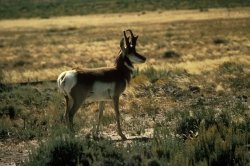 American Pronghorn BuckCourtesy US FWS Digital Library
American Pronghorn BuckCourtesy US FWS Digital Library
Photographer: Harvey Doerksen[/caption]
Nowadays, lacking the need for such swift getaways, it’s possible that the pronghorn has slowed down. But if slowing down is 60 miles an hour, imagine what a high speed chase with the powerful prehistoric cheetah must have been like!
For Wild About Utah and Stokes Nature Center, I’m Holly Strand.
Credits:
Images: Courtesy US FWS Digital Library
Text: Holly Strand, Stokes Nature Center
Sources & Additional Reading:
Adams, Daniel B. 1979, “The Cheetah: Native American” Science 205 (4411): 1155–1158. https://www.sciencemag.org/cgi/content/abstract/205/4411/1155
John A. Byers, American Pronghorn: Social Adaptations and the Ghosts of Predators Past, University of Chicago Press, 1998, https://www.amazon.com/American-Pronghorn-Social-Adaptations-Predators/dp/0226086992
John A. Byers, Built for Speed: A Year in the Life of Pronghorn, Harvard University Press, 2003, https://www.amazon.com/Built-Speed-Year-Life-Pronghorn/dp/0674011422
Pronghorn, ANTILOCAPRA AMERICANA, Utah Conservation Data Center, Utah Division of Wildlife Resources, https://dwrcdc.nr.utah.gov/rsgis2/Search/Display.asp?FlNm=antiamer
Pronghorn, Wildlife Library, National Wildlife Foundation, https://www.nwf.org/Wildlife/Wildlife-Library/Mammals/Pronghorn.aspx
Antilocapra americana, Pronghorn, Animal Diversity Web, University of Michigan Museum of Zoology, https://animaldiversity.org/accounts/Antilocapra_americana/

